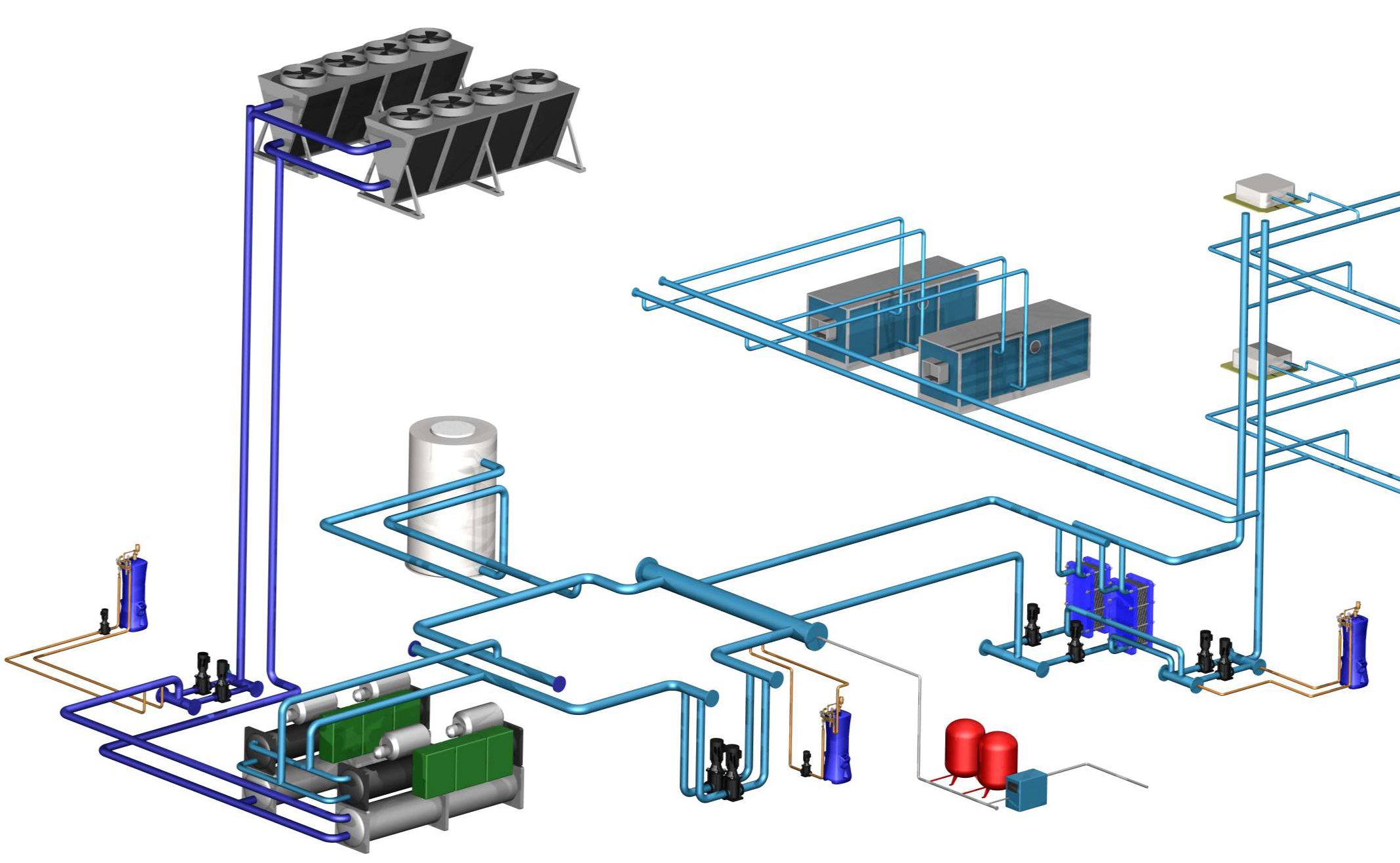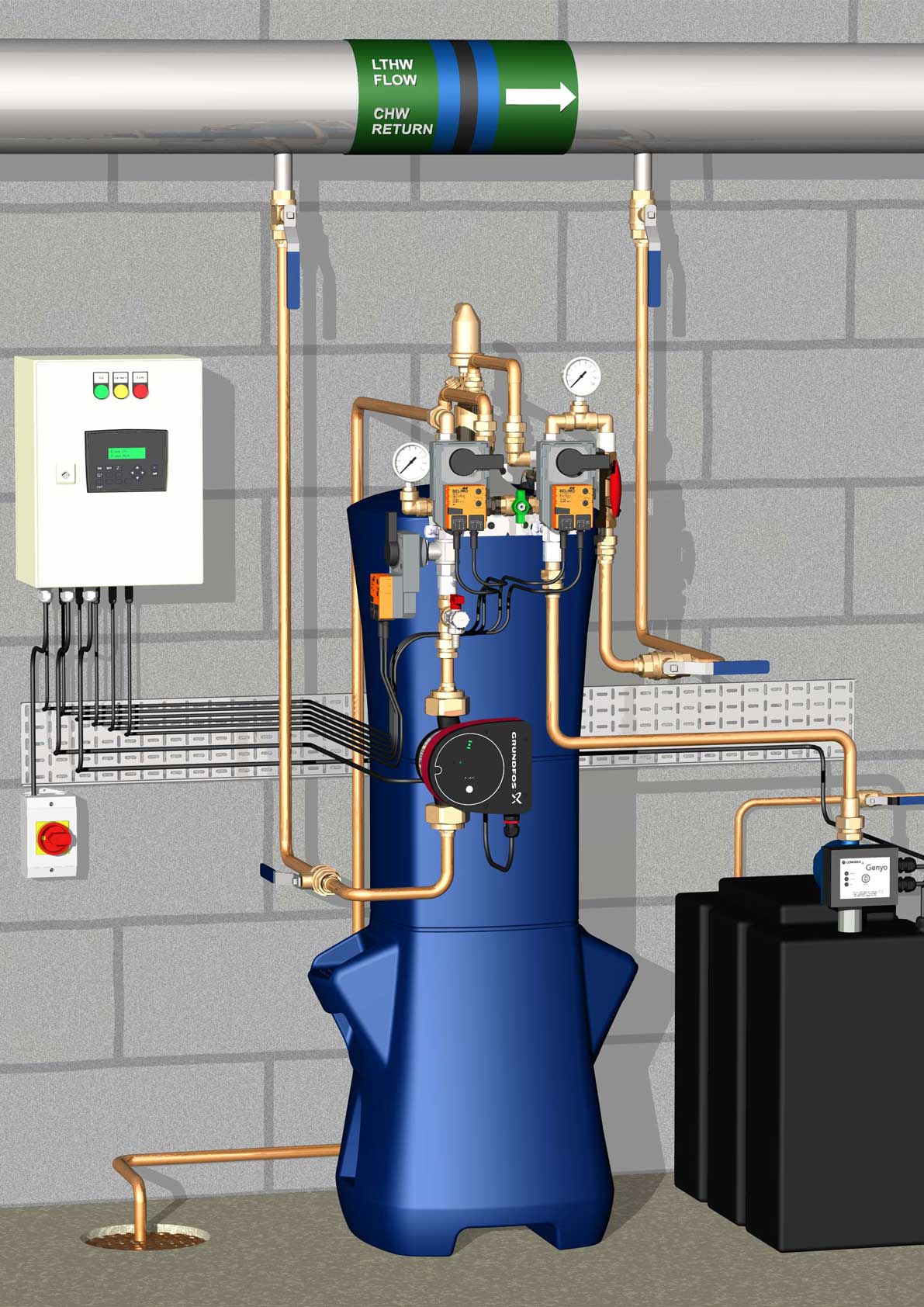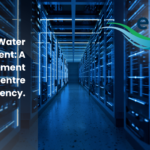Innovation in the built environment – tackling complexity
As building designers and operators look for innovative ways to tackle the challenges of today’s built environment, every part of a building must be examined for potential savings in carbon and energy, and for better occupant safety and comfort.
MEP (mechanical, electrical and plumbing) systems are significant energy users, and are therefore under close scrutiny for savings. They’re also closely related to occupant comfort and health, so designers and contractors are exploring new approaches to delivering services such as heating, hot water and cooling.


Decarbonisation & modernisation
For example, buildings are being ‘decarbonised’ by removing fossil fuel heating to be replaced with heat pumps. Or modern, low-GWP (Global Warming Potential) air conditioning systems are replacing older, less energy efficient systems. Innovative HVAC solutions are helping to deliver energy efficient new-builds, as well as playing a critical role in improving the performance of our existing building stock.
But where there is innovation, there is also increasing complexity. For example, high-tech science and technology parks are a highly active sector, growing in locations such as Cambridgeshire, Oxfordshire, Manchester, and even central London. Within these buildings, HVAC systems must be highly resilient. In the recent BESA (Building Engineering Services Association) Top 30 Contractors report, it’s noted that these complex high-tech projects are increasingly MEP-driven because it can account for more than 50% of the total project value.
Equally, the UK’s growing hyperscale data centre market is one in which cooling systems are vital for success, and which are now increasingly linked to on-site renewable electricity generation or heat reuse systems such as local heat networks to reduce their carbon footprints.
Tackling HVAC complexity
Helping clients tackle today’s HVAC complexities with straightforward solutions is at the heart of Enwa’s own product innovations. Our unique EnwaMatic Side Stream filtration and water treatment is designed for commercial buildings of all types.
Clean water is vital for reliable and efficient heating or cooling systems, and that means not just removing the symptoms of poor water quality but preventing them.
The EnwaMatic Side Stream filtration system removes debris to less than 10 microns. Independent testing shows that suspended solids in treated water are reduced to levels comparable with potable water. That’s important because by-products of corrosion, scale and biofouling can build up in closed systems, reducing the energy transport characteristics of water. This not only disrupts flow, but also reduces the cooling/heating efficiencies of the system. So, water treatment and filtration directly impact energy efficiency and operational carbon in buildings.

Delivery & maintenance
Enwa’s approach simplifies water treatment by using a simple backwash procedure that can be fully automated. It eliminates the replacement or cleaning of strainers, cartridges, or filter bags. This method provides a more environmentally friendly alternative to chemical inhibitors and cleaning agents. It also means that there is no need to store these chemicals on-site, again helping to reduce storage space and keeping facilities teams safer.
Our Side Stream filtration technology has been applied into LTHW, MTHW, CHW and condenser systems within a wide range of sectors, including data centres, NHS hospitals, offices, universities, life science buildings and airports – wherever water is the energy carrier.
In both new-build and refurbishment, an innovative approach to water treatment can deliver better energy performance, longer equipment lifetimes and better outcomes for occupants who benefit from more reliable heating and cooling systems.
In our increasingly complex buildings, and their HVAC systems, our aim is to make all-important water treatment as straightforward as possible to deliver and maintain.
BESA (Building Engineering Services Association) Top 30 Contractors report,







